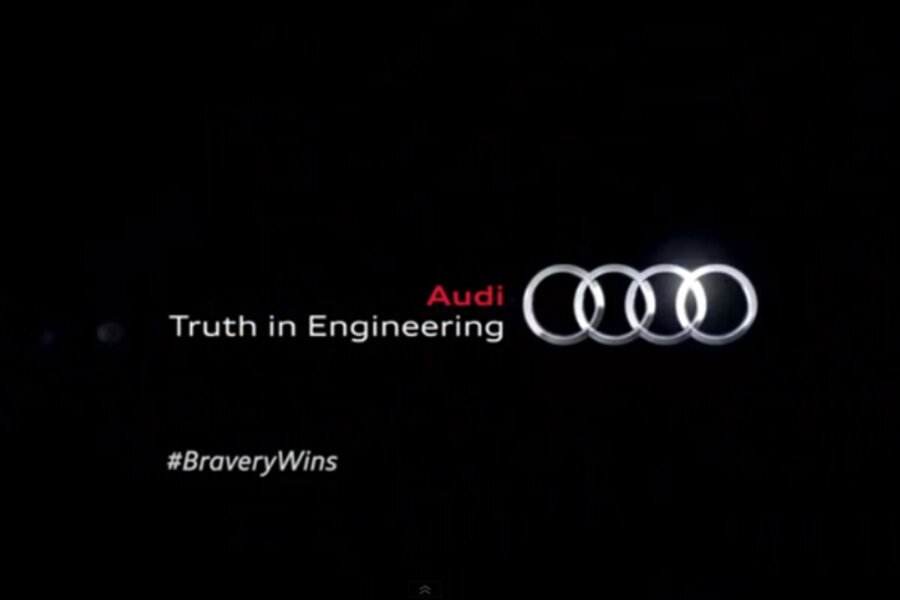The real winner among Super Bowl ads? Twitter.
Loading...
Between the commercial breaks and Beyonce’s halftime show, Super Bowl XLVII was a record-breaking night for Twitter.
Matt McGee of Marketing Land writes that Twitter came out on top among social media sites for most mentions during commercials (hat tip to CNET). He counted Twitter being mentioned in 26 of 52 national TV commercials, compared to four mentions for Facebook, one each for YouTube and Instagram, and none for Google+.
“This is a huge change from last year’s Super Bowl, when Twitter and Facebook both tied with only eight mentions out of a total of 59 counted national commercials,” Mr. McGee writes. “So, for Twitter, the change from eight mentions to 26 is a gain of more than 300 percent while Facebook saw a 50 percent drop in mentions.”
Those ads marketed to Twitter users with a hashtag or logo, including Audi's "Prom" commercial (#braverywins), Wonderful Pistachios' "Get Crackin'" commercial featuring Korean sensation PSY (#crackinstyle), and Tide’s "Miracle Stain" spoof about 49ers icon Joe Montana (#miraclestain).
Facebook received mentions from ads for the Fast & Furious 6, the Hundai Sonata, Taco Bell, and Mercedes-Benz.
McGee explains he started counting after the kickoff until the clock reached 0:00, and he only counted nationally sold commercials — none that were sold and aired by the local affiliate stations because they would be different in each market.
The tally also excludes NFL and CBS ads, as well as the announcers’ shout outs to game sponsors, McGee writes. Iron Man's voiceover, which flashed a Facebook URL on screen, in the third quarter was not counted, nor were Pepsi and Samsung's hashtags during the game.
Twitter’s dominance in social media marketing is more apparent than ever, according to McGee: “This year, brands recognize that Twitter is where they need to try to attract the online conversation around one of the biggest events.”
The Super Bowl generated 24.1 million tweets about the game and the halftime show, the Twitter blog reports. The volume of tweets surpassed the tweet total from the 2012 Super Bowl (13.7 million) by the start of the second half. This excludes the millions of tweets during commercial breaks, which got Doritos trending for its crazed goat and "Fashionista Dad" ads and Go Daddy trending for the awkward kissing scene in its first ad.
Highlights from Twitter
Within the Twitterverse, Beyonce was the real winner with 5.5 million tweets about her halftime performance (#BeyonceBowl was a trending topic throughout the first half of the game). Fans and spectators took to Twitter as they watched the star dance with holograms of herself and her old band mates, Kelly Rowland and Michelle Williams of Destiny’s Child.
The Destiny’s Child reunion was one of the most-tweeted moments with 257,000 tweets per minutes. Beyonce’s “Single Ladies” performance generated 252,500 t.p.m., while the end of the halftime show sparked 268,000 t.p.m.
Unsurprisingly, the power outage received a lot of attention on the social media site with 231,500 t.p.m., according to the Twitter blog. The blackout that delayed the second half lasted nearly 34 minutes, during which several parody accounts popped up. (Many people joked that Beyonce’s explosive performance was to blame.)
Some sponsors launched social ads on Twitter while the power was out. Oreo posted a black-tinted twitpic during the blackout, which reads "you can still dunk in the dark." Tide's Stain Saver twitpic told followers that "We can't get your blackout. But we can get your stains out."
Other highlights include Ravens receiver Jacoby Jones’ 108-yard kickoff return for a touchdown. The return, which ESPN says was 1 yard short of the longest play in NFL history, generated 185,000 t.p.m.
Twitter recorded 183,000 t.p.m. at the end of the game, 168,000 when Jones caught a 56-yard pass for a Ravens touchdown at the end of the second quarter, and 131,000 t.p.m. for 49ers running back Frank Gore’s touchdown.
Were you on Twitter during the Super Bowl? What was your favorite moment on Twitter?
For more tech news, follow Steph on Twitter: @stephmsolis







